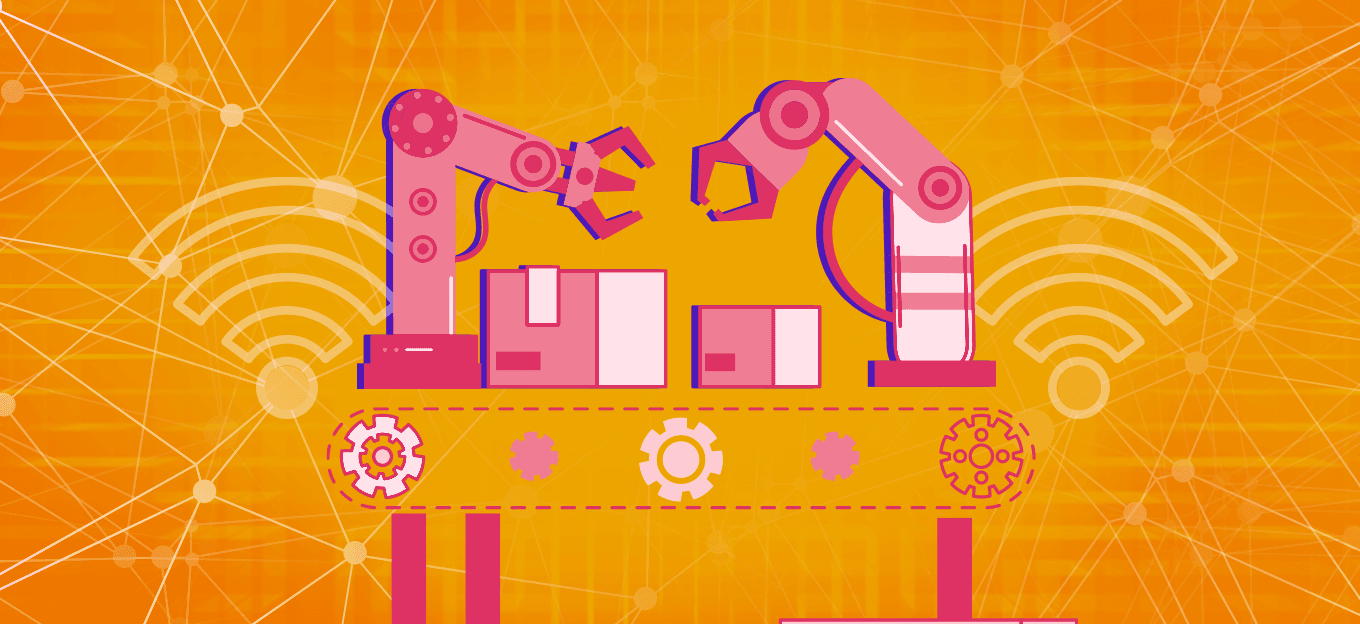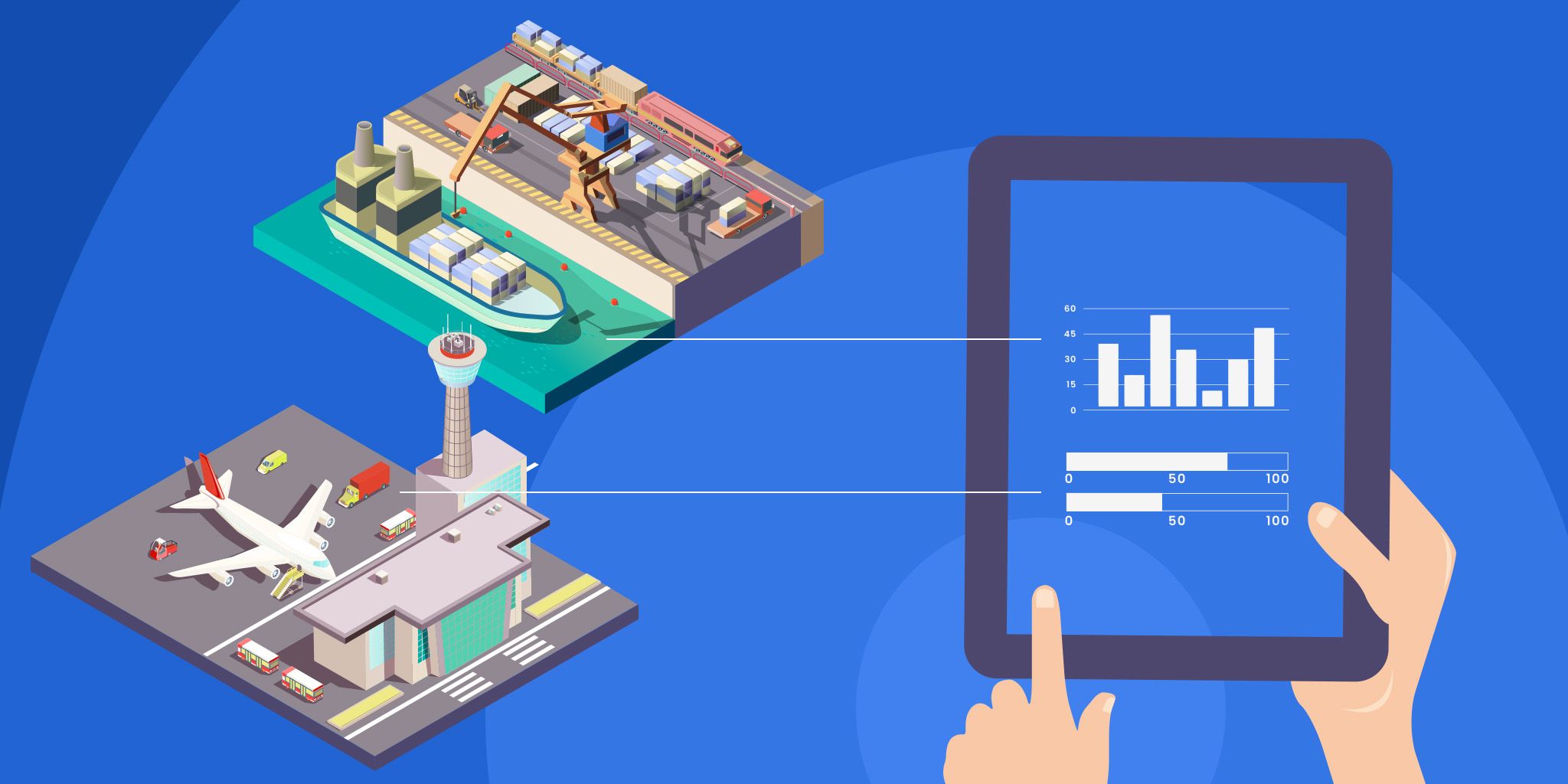Container Orchestration for Industrial IoT Applications
Container Orchestration for Industrial IoT Applications
- Last Updated: November 14, 2025
Durojaye Olusegun
- Last Updated: November 14, 2025



Modern manufacturing relies on dozens of specialized software applications running on thousands of connected devices. From predictive maintenance systems that monitor equipment health to quality control dashboards tracking production metrics, these applications are the backbone of industrial automation. But managing this software complexity across distributed factory environments is a big operational challenge.
The industrial IoT market is projected to reach $676.20 billion by 2030, growing at 34.41 percent annually, because manufacturers need real-time data and automated decision-making. That means exponentially more applications to deploy, update, and maintain across geographically dispersed facilities.
Container orchestration solves these problems by providing standardized application packaging and automated lifecycle management. Instead of treating each application deployment as a unique project, orchestration platforms allow for consistent, repeatable processes that scale across entire manufacturing networks. This reduces operational overhead and improves reliability and security across industrial environments.
Let's explore how container orchestration changes industrial IoT application management and practical implementation strategies.
Industrial IoT Infrastructure Challenges
Managing applications in industrial environments is different from traditional IT deployments. Manufacturing facilities are harsh environments with temperature extremes, electromagnetic interference, and safety requirements that limit where and how applications can run.
For example, take an automotive plant with 500 connected devices across the assembly line. Each device might be running different versions of the same monitoring application because updates happened at different times or because individual technicians made local changes to solve specific problems.
When a security vulnerability emerges, updating all these deployments becomes a manual nightmare that can take weeks to complete. It gets worse when you scale across multiple facilities.
A pharmaceutical company might have identical production lines in different countries, but subtle infrastructure differences mean applications behave differently in each location. Troubleshooting is impossible when you can’t replicate issues across environments.
Managing containerized applications across thousands of IoT edge devices requires robust infrastructure management strategies. Traditional manual deployment approaches break down at scale, each requiring consistent configuration and reliable updates.
Understanding the difference between configuration management and infrastructure as code becomes critical when architecting container deployment strategies that can scale across distributed industrial environments while maintaining operational consistency.
How Container Orchestration Solves Industrial IoT Problems
Container orchestration turns chaotic application management into predictable, scalable operations by addressing each infrastructure challenge head-on. Instead of managing hundreds of individual application deployments, orchestration platforms treat your entire industrial software stack as a single system with consistent behavior and automated processes.
Standardized Application Packaging
Containers eliminate the "it works on my machine" problem by packaging your IoT applications with all their dependencies into a portable, consistent unit. For instance, a predictive maintenance application packaged as a container runs the same across your Texas facility and your German plant, with no more deployment guesswork.
This means your edge analytics software, sensor monitoring dashboards, and machine learning models deploy the same across all your manufacturing sites, regardless of the underlying IoT hardware or operating system differences between sites. When your quality control system needs an update, you deploy one container image across all locations instead of managing facility-specific installations.
Automated Deployment Consistency
Orchestration platforms automatically deploy IoT applications across your entire facility network using predefined rules and policies, eliminating manual errors and configuration drift. For instance, when a new edge analytics container needs to roll out to 200 factory floor devices, Kubernetes handles the deployment automatically while ensuring each device receives the same configuration. This automation reduces deployment time from days to minutes while guaranteeing consistency across all your industrial IoT endpoints.
Centralized Lifecycle Management
Orchestration platforms provide a single control point for managing application updates, security patches, and rollbacks across thousands of IoT devices simultaneously. When a critical vulnerability emerges in your temperature monitoring software, you can push updates to every connected sensor in your network with a few clicks rather than visiting each facility manually. This centralized approach also enables automatic rollbacks if new deployments cause issues, minimizing downtime and reducing the risk of production disruptions.
Resource Optimization for Edge Computing
Container orchestration intelligently allocates computing resources across your IoT infrastructure based on real-time demand and device capabilities. The platform automatically scales your predictive analytics containers up during peak production hours and scales them down during maintenance windows, maximizing the efficiency of limited edge computing resources. This dynamic resource management ensures critical applications always have the processing power they need while preventing resource waste on underutilized edge devices.
Implementation Strategies and Best Practices
Container orchestration in industrial environments requires planning around the unique constraints and requirements of manufacturing operations. Unlike cloud deployments, industrial IoT implementations must account for network limitations, safety protocols, and integration with legacy systems that can’t be easily replaced.
Edge-First Deployment
Start your container orchestration journey at the edge rather than trying to centralize everything in the cloud. Industrial applications often require millisecond response times that cloud latency can’t support, making edge computing essential for real-time control systems and safety applications.
Deploy lightweight Kubernetes distributions like K3s or MicroK8s on industrial edge devices, which provide full orchestration capabilities while consuming minimal resources. These platforms can run on ruggedized industrial computers with limited CPU and memory, so your container workloads don’t interfere with critical control systems running on the same hardware.
Security and Compliance Requirements
Industrial networks operate under strict security and regulatory frameworks that container deployments must respect. Implement network policies that maintain existing segmentation between operational technology and information technology networks, so containerized applications can’t accidentally bridge air-gapped systems.
Use private container registries within your industrial network to maintain control over application images and prevent unauthorized software from entering production environments. This approach also enables compliance with industry regulations that require complete audit trails of software deployed in manufacturing systems.
Integration with Existing Factory Systems
While Kubernetes handles most orchestration tasks automatically, industrial deployments often require additional automation for cluster bootstrapping, device provisioning, and custom monitoring workflows. Many teams complement their orchestration strategy with effective script automation for tasks like integrating with existing manufacturing execution systems, configuring device-specific network settings, and handling legacy protocol translations that containers alone can’t address.
Focus on API-based integration patterns that allow containers to talk to existing SCADA systems, PLCs, and historians without requiring major infrastructure changes. This incremental approach reduces implementation risk while providing immediate value from containerized applications.
Wrapping Up
In conclusion, container orchestration turns industrial application management from an unpredictable process into a set of scalable operations that modern manufacturing requires.
Manufacturers can do this by taking a small first step with non-critical applications in a single location in order to gain operational permissions before they scale across their entire industrial network. The investment in standardization and automation pays off as you expand your industrial IoT presence and application complexity.
The Most Comprehensive IoT Newsletter for Enterprises
Showcasing the highest-quality content, resources, news, and insights from the world of the Internet of Things. Subscribe to remain informed and up-to-date.
New Podcast Episode

Moving Past the Pilot Phase in IoT and AI
Related Articles




